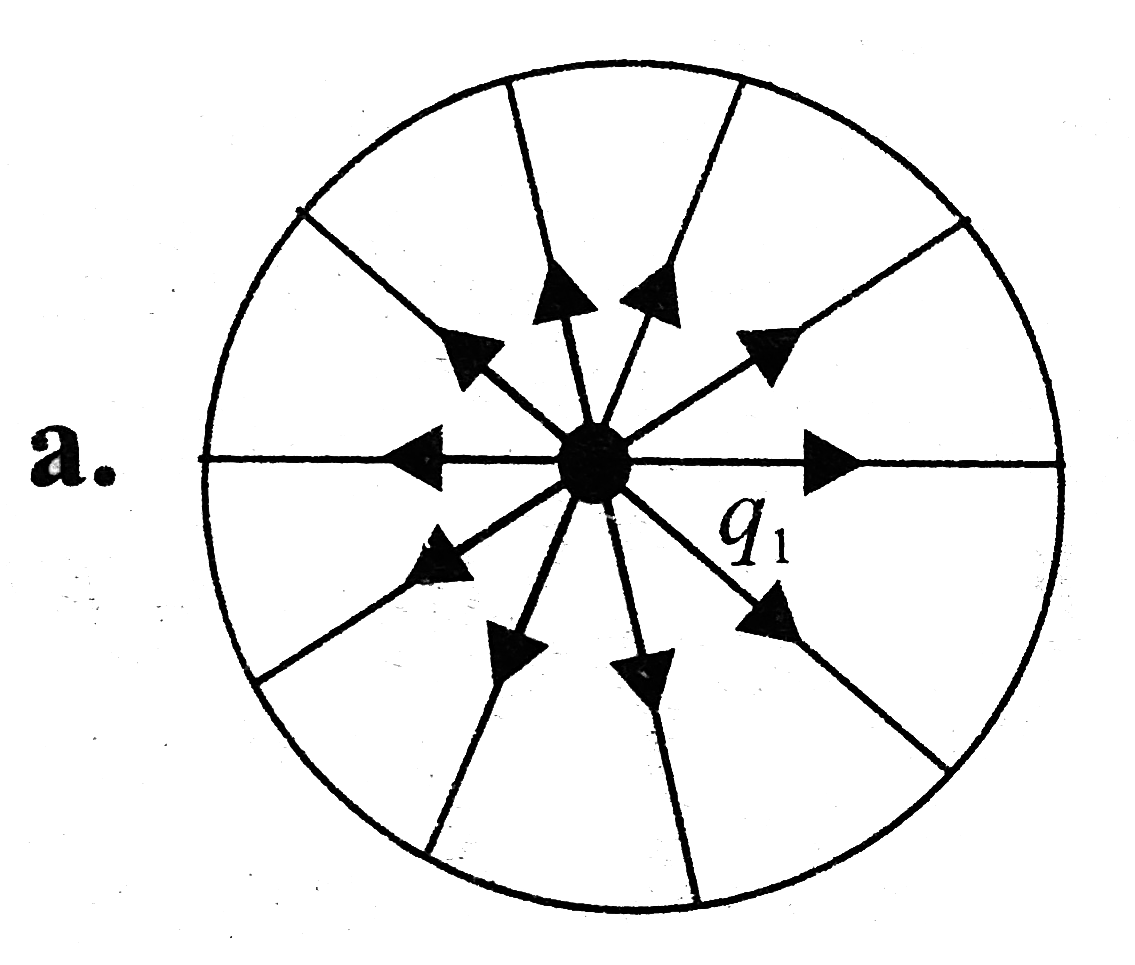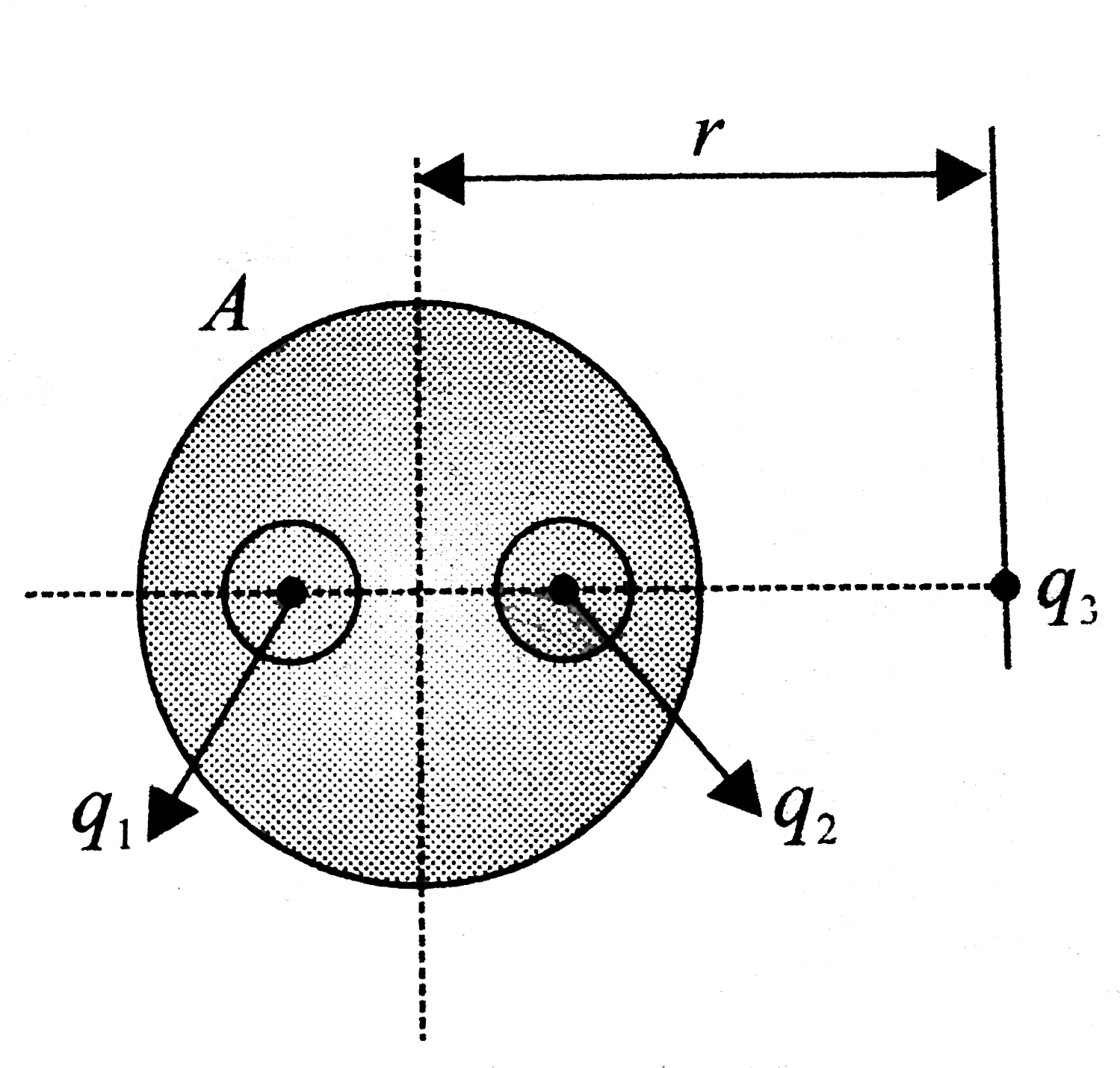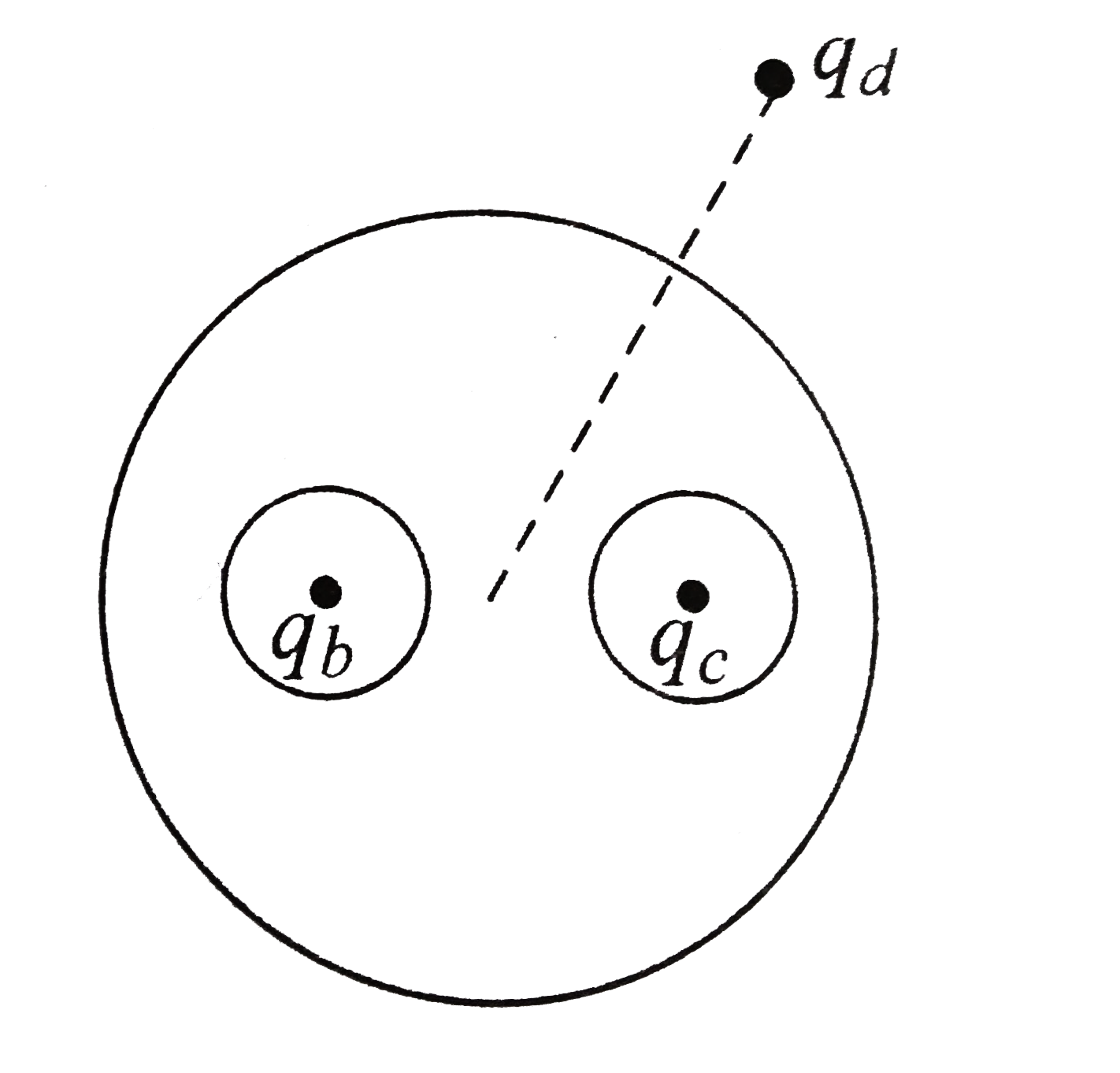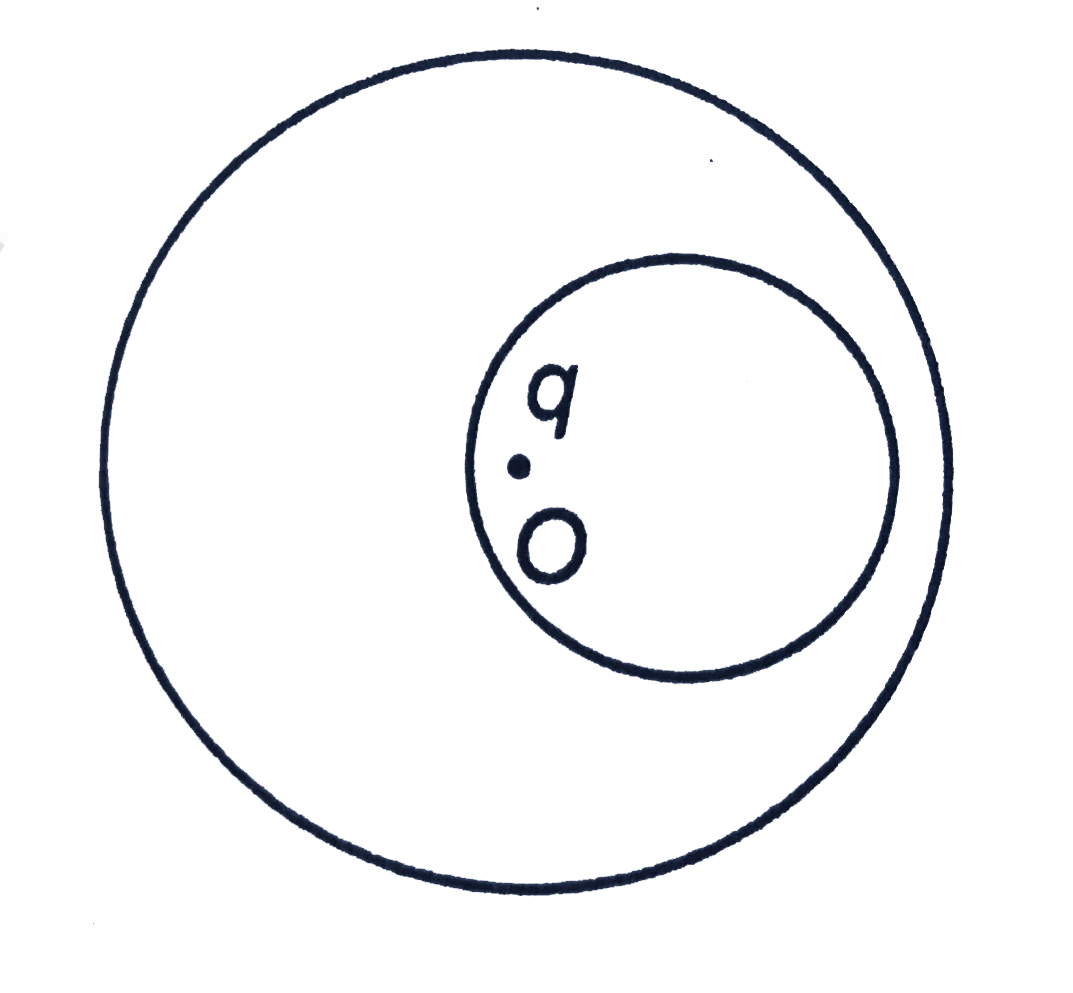A spherical conductor A contains two spherical cavities as shown in Fig.2.127. The total charge on conductor itself is zero . However , there is a point charge q1 at the center of one cavity and q2 at the center of the other cavity . Another charge q3 is placed at a large distance r from the center of the spherical conductor.

If q1 is displaced from its center slightly (being always inside the same cavity ), then the correct representation of field lines inside the same cavity is


There will be no field lines inside the cavity.

The correct Answer is:B
Thereis charge inside cavity , so field lines will be present , but the potential at surface of conductor is same everywhere . So field lines should be perpendicular .
Topper's Solved these Questions
- ELECTRIC FLUX AND GAUSS LAWBOOK - CENGAGE PHYSICSCHAPTER - ELECTRIC FLUX AND GAUSS LAWEXERCISE - Subjective type
7 Videos
- ELECTRIC FLUX AND GAUSS LAWBOOK - CENGAGE PHYSICSCHAPTER - ELECTRIC FLUX AND GAUSS LAWEXERCISE - MCQ s
38 Videos
- ELECTRIC FLUX AND GAUSS LAWBOOK - CENGAGE PHYSICSCHAPTER - ELECTRIC FLUX AND GAUSS LAWEXERCISE - Multiple Correct
8 Videos
- ELECTRIC CURRENT AND CIRCUITBOOK - CENGAGE PHYSICSCHAPTER - ELECTRIC CURRENT AND CIRCUITEXERCISE - Interger
8 Videos
- ELECTRIC POTENTIALBOOK - CENGAGE PHYSICSCHAPTER - ELECTRIC POTENTIALEXERCISE - DPP 3.5
14 Videos
Similar Questions
A point charge +q is held at a distance R from the centre of an uncharged spherical conductor of radius a(a<R). Calculate the potential of the conductor in the presence of q.
View SolutionA point charge +q is held at a distance R from the centre of an uncharged spherical conductor of radius a(a<R). Calculate the potential of the conductor in the presence of q.
View Solution
Knowledge Check
A spherical conductor A contains two spherical cavities as shown in Fig.2.127. The total charge on conductor itself is zero . However , there is a point charge q1 at the center of one cavity and q2 at the center of the other cavity . Another charge q3 is placed at a large distance r from the center of the spherical conductor.

The force acting on conductor A will beAzeroBq3(q1+q2)4πε0r2C−q3(q1+q2)4πε0r2Dq3q1+q2q3+q1q24πε0r2A spherical conductor A contains two spherical cavities as shown in Fig. The total charge on conductor itself is zero . However , there is a point charge q1 at the center of one cavity and q2 at the center of the other cavity . Another charge q3 is placed at a large distance r from the center of the spherical conductor.

Which of the following statements are true ?ACharge q3 applies a larger force on the charge q2 than on charge q1.BCharge q3 applies a smaller force on the charge q2 than on charge q1.CCharge q3 applies equal force on both the charges.DCharge q3 applies no force on any of the charges.A spherical conductor A contains two spherical cavities. The total charge on the conductor itself is zero. However, there is a point charge qb at the centre of one cavity and qc at the centre of the other. At considerable distance r away from the centre of the spherical conductor, there is another charge qd. Forces acting on qb,qcandqd are F1,F2,andF3, respectively. [Assume all charges are positive.]
 AF1<F2<F3BF1=F2<F3CF1=F2>F3DF1>F2>F3
AF1<F2<F3BF1=F2<F3CF1=F2>F3DF1>F2>F3
Electric potential at the center ofa charged hollow spherical conductor is
View SolutionThe electric field intensity at a point located at distance r(r<R) from the center of a spherical conductor (radius R) charged Q will be-
View SolutionA charge q is placed at O in the cavity in a spherical uncharged conductor. Points S is outside the conductor. If q is displaced from O towards S (still remaining within the cavity)

View SolutionA conducting sphere of radius R2 has a spherical cavity of radius R1 which is non concentric with the sphere. A point charge q1 is placed at a distance r from the centre of the cavity. For this arrangement, answer the following questions.
If q1 is shifted to the centre of the cavity, then: (choose the correct alternative)
View SolutionA charge Q0 is placed at the center of spherical cavity of a conductor and another charge Q is placed outside the conductor as shown in the figure. The correct statement is :

View Solution
